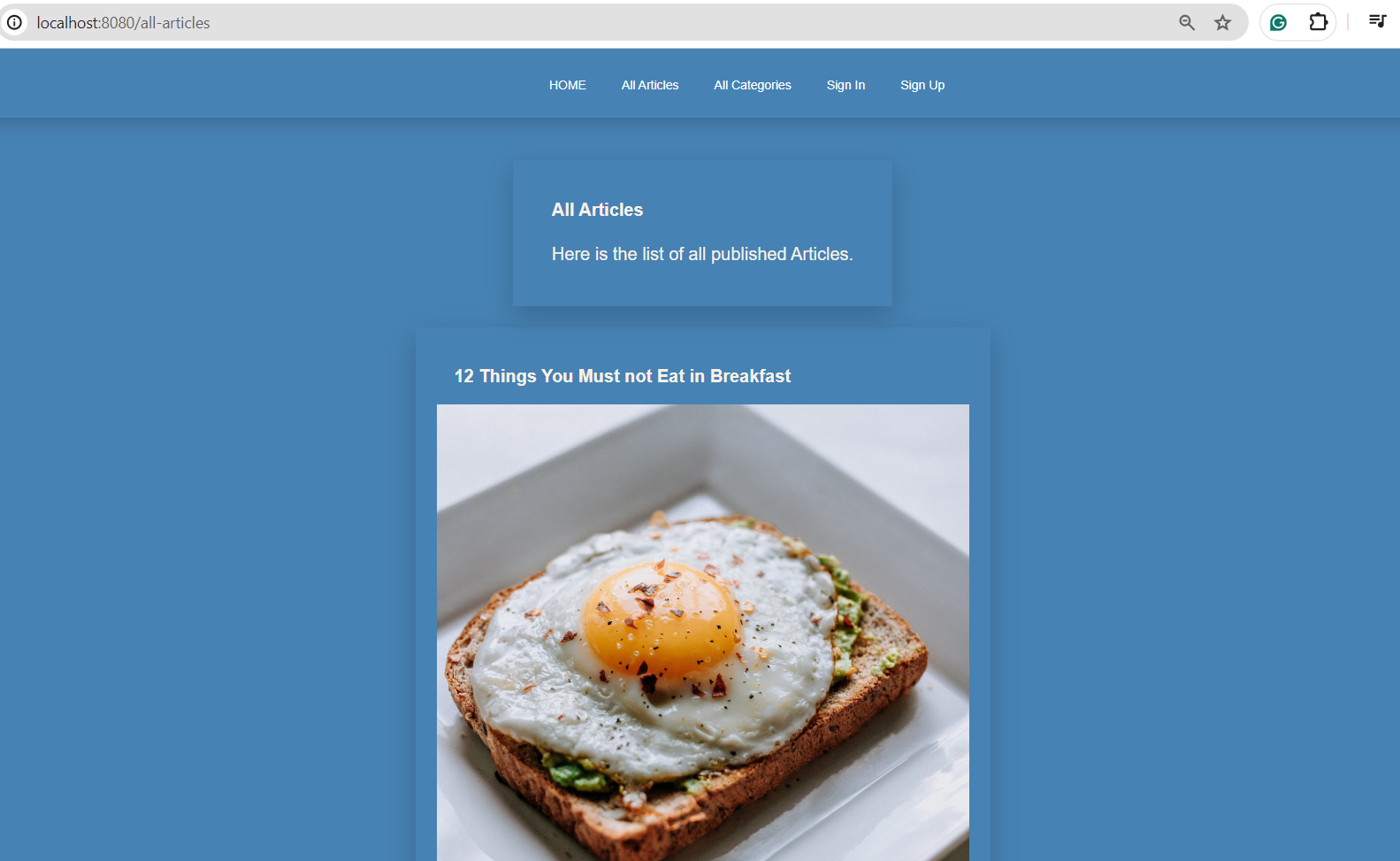Introduction
In the changing realm of web development developing an feature packed blog application necessitates utilizing a blend of potent frameworks and tools. In this article we will explore the process of constructing a blog app, with Spring Boot MVC, a framework known for its user nature and effectiveness.
Project Overview
The initiative, called “articles web ” is a web application built on Spring Boot aimed at offering a blogging platform. By utilizing the Spring Boot Starter Parent version 2.1.8.RELEASE the system is set up for development and deployment.
Key Dependencies
The project utilizes dependencies to improve functionality and simplify development;
Lombok; A library that makes Java code more concise by removing tasks.
Spring Boot Starter Data JPA; Simplifies integration, with the Java Persistence API (JPA) for database functions.
Thymeleaf; A modern Java template engine for web and standalone applications.
PostgreSQL Database; A powerful, open-source relational database system suitable for various applications.
Spring Boot Starter Web; Offers essential tools for creating web applications.
Spring Boot Starter Security; Incorporates Spring Security for managing authentication and authorization.
Hibernate Java 8; Extends Hibernate to support Java 8 functionalities.
Spring Boot Starter Validation; Adds validation support to the Spring Boot application.
Thymeleaf Extras SpringSecurity5; Enhances Thymeleaf with features from Spring Security.
ModelMapper; A Java library for object-to-object mapping tasks.
Spring Boot Starter Mail; Simplifies email-sending capabilities within the application.
OGNL (Object Graph Navigation Library); A robust expression language, for accessing and modifying properties of Java objects.
Features and Highlights
Spring Security Integration
By incorporating Spring Boot Starter Security the blog application is guaranteed to operate in an protected setting. User verification and access control work together smoothly to boost the systems security measures.
ModelMapper for Object Mapping
The project utilizes ModelMapper to make it easier to map between objects. This leads to neater and easier to maintain code particularly when working with data structures.
Thymeleaf Templates with Spring Security Support
Thymeleaf, combined with Thymeleaf Extras SpringSecurity5 allows for the development of protected web pages. The incorporation of Spring Security guarantees access management and user authentication within the templates.
Email Sending Capabilities
The Spring Boot Starter Mail dependency makes it easy to send emails straight, from the application. This can be useful, for sending notifications resetting passwords or addressing any email needs you may have.
SMTP (Simple Mail Transfer Protocol)
SMTP, which stands for Simple Mail Transfer Protocol is a communication method utilized to send email messages across the internet. It serves as the established protocol, for email delivery. Manages the transmission of emails from a sender to a server or between servers. While SMTP typically functions on port 25 by default secure variations like SMTPS (SMTP Secure) and SMTP, with TLS (Transport Layer Security) commonly operate on ports 465 and 587.

Conclusion
Creating a blog application using Spring Boot MVC lays a groundwork, for web development. By incorporating dependencies developers can streamline the process. Concentrate on feature development instead of getting caught up in repetitive code.
The “blog web app” project exemplifies the versatility and strength of the Spring Boot framework through its selection of dependencies and functionalities. Whether you’re a developer or new, to Spring Boot this project demonstrates how to craft secure web applications effectively.
The project is currently deployed on the VPS server = http://51.83.129.49:8080/
